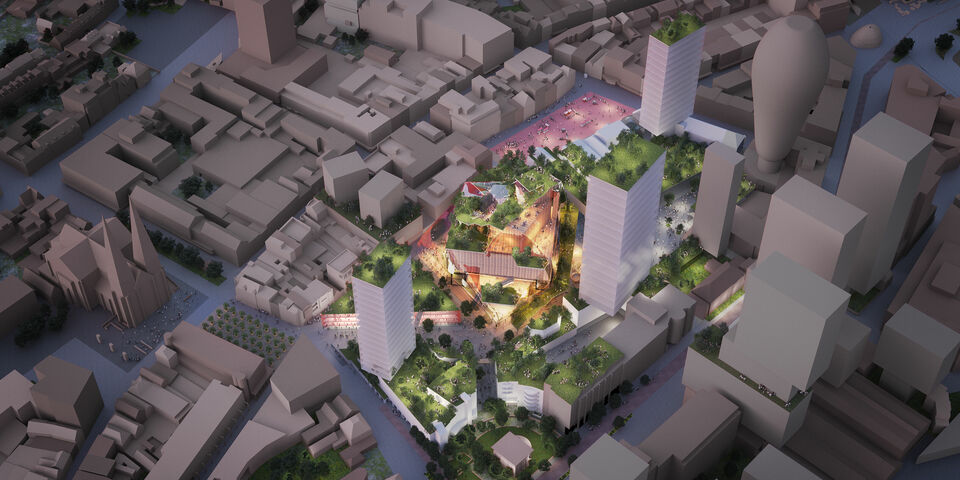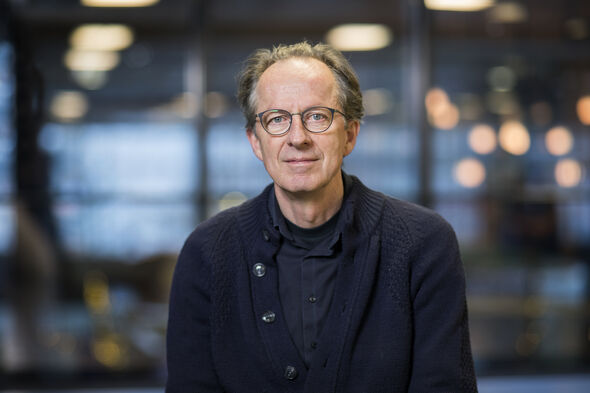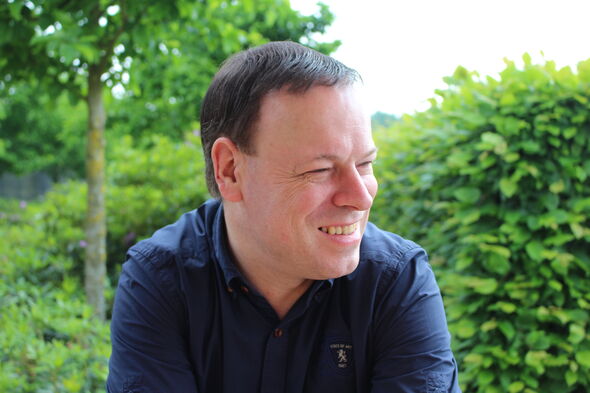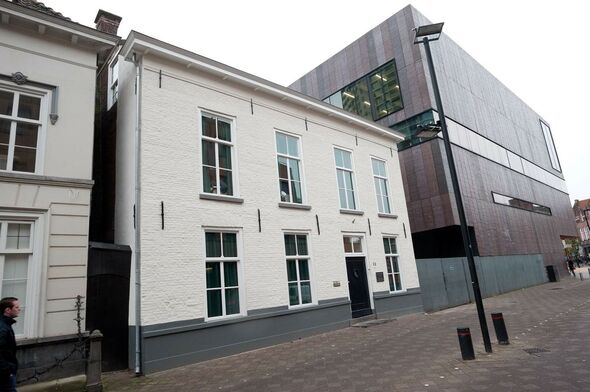Can Eindhoven cope with Winy Maas's plans for the Heuvel?
If the decision is left to top-flight architect Winy Maas, the Heuvel shopping mall will lose its roof and the Muziekgebouw will find itself under a glass dome. At the request of real estate company CBRE, he produced drawings giving a radically new look to the building many feel mars Eindhoven's city center. While the municipality is receptive to Maas’s ideas, what's the view of the experts on our campus? Cursor spoke with architectural historian Bernard Colenbrander and wind professor Bert Blocken. Housed in a building dating from 1800 across the street from the Heuvel, the Eindhoven Student Corps is starting to worry about the effect pile-driving will have on its premises.
Bernard Colenbrander, TU/e’s Professor of Architectural History and Theory, fears that Winy Maas (MVRDV) is not the right man in the right place. “He is an architect whose strength is delivering spectacle, designs more closely related to visual culture than the prevailing architectural tradition. His buildings are incidents, by which I mean they are not crafted to fit into a vision of urban planning. As a city, Eindhoven has a fairly weak structure – a chaotic city center with few striking architectural landmarks – so it isn't the place to apply this approach.”
All this is in sharp contrast to, say, Rotterdam, where the urban structure created in the wake of WWII bombing is, in Colenbrander's view, more than capable of carrying Maas’s eye-catchers – such as the Markthal and Boijmans Van Beuningen's Depot, a new home for the museum's entire collection. Similarly, the designs for Eindhoven's city center have also garnered plenty of attention. ‘Winy Maas goes for the wow effect’ ran the ED headline above the announcement of the plan.
New problems
The multiple vacant premises in covered mall the Heuvel and the operating loss of the Muziekgebouw are problems the municipality would like to see resolved. But Colenbrander thinks the solutions proposed by Maas will create new problems. For example, the architect foresees another slice sitting atop the Muziekgebouw for the Effenaar pop venue and possibly yet another for youth center-cum-pop venue Dynamo. “When somewhere else in the city loses these functions, gaps are created that have to be filled. This is problematic in a city like Eindhoven with – as I've mentioned – a weak structure.”
Read more after the picture.
The Muziekberg, that's the name envisaged for the new stack of entertainment venues. Over the entire structure Maas foresees a glass dome of sorts. The covered mall, on the other hand, will lose its roof. The exposed stores will gain green roofs accessible to the public – a high-altitude city park, as it were. The plan also includes high-rise, so the project becomes to some extent self-financing, with homes or a hotel.
Colenbrander is critical: “High-rise and that everything must be green are flavors of the month. The city picks up on trends, but there's a lack of a strong vision that would enable these aspects to be incorporated in such a way that they strengthen the urban structure.” For Maas, it should be noted, both high-rise and the use of green are necessities not fads. He has shared his convictions with de Volkskrant: population growth and urbanization force us to build skywards, and the radical greening of cities can reduce the temperature on earth.
Wearing two hats
That Maas is not the right architect to give the Heuvel a metamorphosis is logical, to Colenbrander's way of thinking, given his position as the city's architectural supervisor and advisor. In adopting a stance towards any large urban construction project, the municipality takes its cue from Maas and his vision. Won't a conflict of interests arise if one of these projects now comes from his own stable? Riek Bakker, from 1997 to 2001 Professor of Urban Development at TU/e, thinks so. In the ED she says that the wearing of two hats is not a good thing. Maas himself doesn't see a problem; for this project someone else can replace him as supervisor. Colenbrander does not agree. “He must choose: either be the city's architectural supervisor or as an architect compete for large projects. He can't do both.”
Wind nuisance
When TU/e Professor of Building physics Bert Blocken examines the plans for the Heuvel, he is concerned the shopping streets will become the locus of blustery weather. “If you place high-rise between low-rise, you can expect to create a wind trap,” says the man who knows wind tunnels. In his experience this factor is almost always taken into account too late in the planning process. “An architect likes to have complete design freedom, which I can understand, but once a completed design is on the table, the willingness to change things is often limited.”
Read more after the photo.
Although the Netherlands (since 2006) is the only country in the world to have a wind nuisance standard, awareness in the sector is slow to catch up, believes Blocken. He cites the wind nuisance around the Student Hotel close to the station. By contrast, District-E, the large-scale high-rise project planned for the same area, is an example of how things should be done, he says. “We have been involved in District-E from the outset and have run the wind numbers on no fewer than eighteen simulations and redesigns. Both the project developer and the designer were willing to listen to us and to keep returning to the drawing board.”
Interventions able to reduce the wind nuisance caused by high-rise include resiting or reangling buildings or – a little less drastic – broadening the base of the building and rounding off its corners, to make the whole structure more aerodynamic. “Although the wind is never still around high-rise.” Blocken is skeptical whether Winy Maas and CBRE will be open to changes like these: “After all, the plans have been widely distributed via the media.”
Student corps fears subsidence
The building belonging to the Eindhoven Student Corps (ESC) stands on the Ten Hagestraat, right behind the Heuvel. What does the board think of the building plans? Vice president Aron van den Hoogen is personally very enthusiastic: “I think it's a really cool project. The Heuvel is a thorn in the side of many people and I think it would be better for the stores if they didn't have to stay in such a closed-in building.”
In his official capacity, however, Van den Hoogen is less happy. Among his responsibilities, he counts the building on Ten Hagestraat. “Our building dates from around 1800 and the structure has certain fragilities. When the Vesteda tower was being built – we weren't here at that time – the pile-driving caused some subsidence. And obviously the Heuvel is even closer, so I'm worried it's going to create a lot of work for one of my successors, once construction gets underway at some future date.”
The idea of a long-term building site in the front yard is not, however, something Van den Hoogen is losing any sleep over: “As it is, we keep the curtains closed and at night there won't be noise.” But he does wonder how this situation is going to play out during the Introduction Week(s): “That's when you'll typically have about five hundred bikes parked in the street in the evening. Suppose there's a road closure, where will they be able to go without causing a nuisance in the neighborhood?”





Discussion